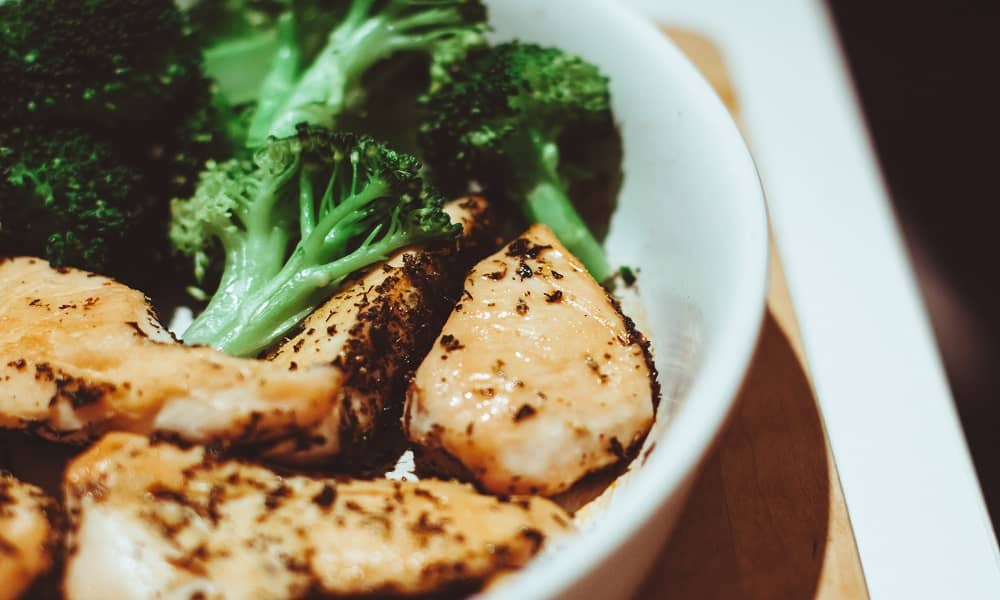
08 Jun What to Eat for Iron Deficiency: Vegetarian & Vegan Foods Included
Iron deficiency inflicts more than 3 million people per year in the US alone.
Iron deficiency is among the most common nutritional deficiencies, and, if not taken care of, can have long-term adverse effects.
Fortunately, there’s a long list of foods for iron deficiency proven to elevate the bogged down levels of iron in the body.
We’ll briefly discuss the foods for iron deficiency in the forthcoming section of the blog.
11 Foods for Iron Deficiency
Here, we have for you a complete iron-rich foods list with 11 highly nutritious dietary sources that can cure iron deficiency.
Thus, let’s find answers to ‘what foods are high in iron?’
#1. Spring Some Spinach

Falling in love with greens can take a while.
But once you fall, it never fails at serving you with the best nutritional values.
One such green vegetable is spinach which is rich in iron but low in calories.
Perfect for a nutritious weight loss meal to lose love handles!
Iron Per Serving: You get about 2.5mg iron from 100 gm of raw spinach.
#2. Nutritious and Savory Seafood
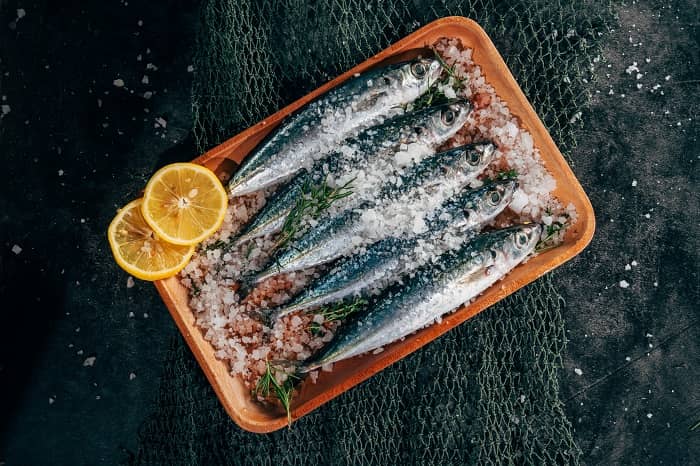
Various kinds of seafood, especially oysters, clams, fish, and mussels, are loaded with a generous proportion of iron.
The best part is that you don’t have to compromise on your taste buds for fueling back your iron levels.
Not only iron but the seafood is also rich in zinc.
Iron Per Serving: You get about 3.29mg from 5 oysters.
#3. Say Yes to Liver

Meats including that of the liver, kidney, heart, or brain are highly rich in iron. Additionally, these organ meats are loaded with protein and choline.
Iron Per Serving: You get 6.7 mg of iron from 100gm of beef liver.
#4. Let Legumes Do Wonders
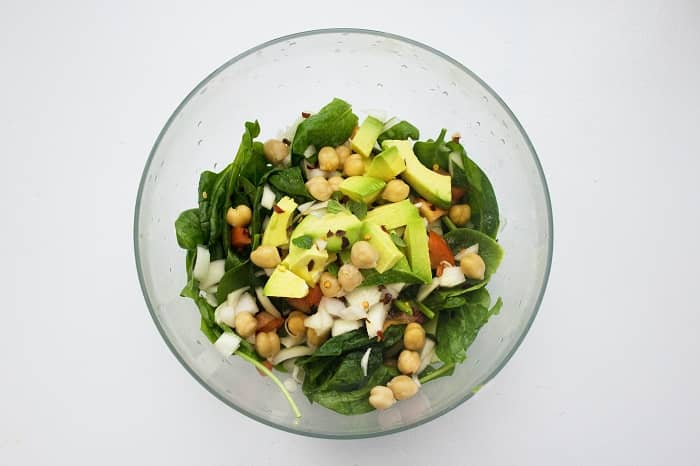
A good amount of iron can be extracted by snacking munchy-chunky legumes like beans, lentils, soybeans, and peas.
Not only will they increase the level of iron but will also up your intake of potassium and magnesium.
Iron Per Serving: You get about 6.6mg of iron from 200gms. of cooked legumes.
#5. Red Meat is Not Always a Red Flag
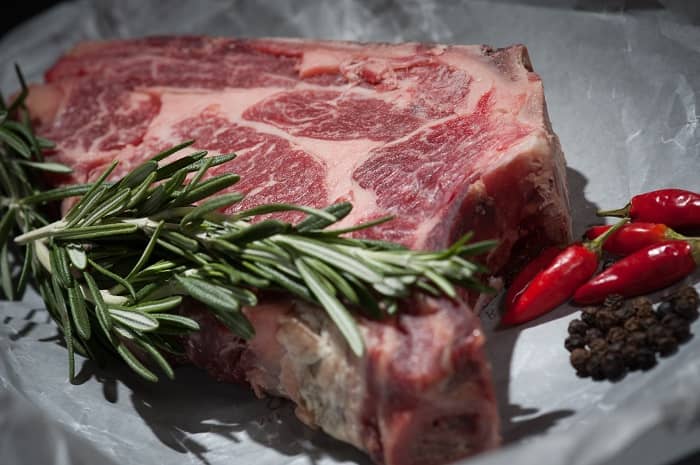
Although red meat comes with a big NO for cholesterol or cardiac patients. But that doesn’t decrease the nutritional value of iron.
In fact, it is the most accessible source of iron. So, no harm if consumed in limited dosage.
Iron Per Serving: You get about 2.9mg of iron from 100gms of ground beef.
#6. Pump Up Iron Intake With Pumpkin Seeds

These nutty, nutritious, and tasty seeds are the best foods for anemia due to being loaded with iron.
The best part is that you can munch on it anytime as it’s a portable snack.
Apart from iron, the seeds are also rich in vitamin K, manganese, and zinc.
Cool, isn’t it? Tiny yet highly nutritious in terms of iron-rich foods for a vegetarian.
Iron Per Serving: You get about 2.6mg of iron from 28gms of pumpkin seeds.
#7. Quintessential Quinoa

As a pseudocereal, quinoa is a powerhouse of iron with 0% gluten.
This makes it even more suitable for consumption for those suffering from celiac disease or those who are gluten-intolerant.
Additionally, quinoa is an excellent source of protein, magnesium, copper, folate, and is loaded with ample antioxidants.
Iron Per Serving: You get about 2.9mg of iron from 200gms of quinoa.
#8. Benefits of Turkey’s Nutrition

The turkey family, especially the dark turkey meat, is known as the champion of iron-boosters. They are the top rankers among the iron food list.
Isn’t it amazing that this savory item is highly nutritious too?
Moreover, turkeys also help you lose that spare tire in the mid part by accelerating your body’s metabolism.
Iron Per Serving: You get about 1.4mg of iron from 100 gms of dark turkey meat.
#9. Binge on Broccoli

Broccoli gets counted as one of the best foods for iron deficiency due to being a highly nutritious diet source.
Therefore, making it an iron deficiency treatment food.
In fact, it’s also potent for cancer and is, furthermore, rich in Vitamin C and Vitamin K.
Iron Per Serving: You get about 1 mg of iron from 150 gms of cooked broccoli.
#10. Dark Chocolate is an All-Time Delight
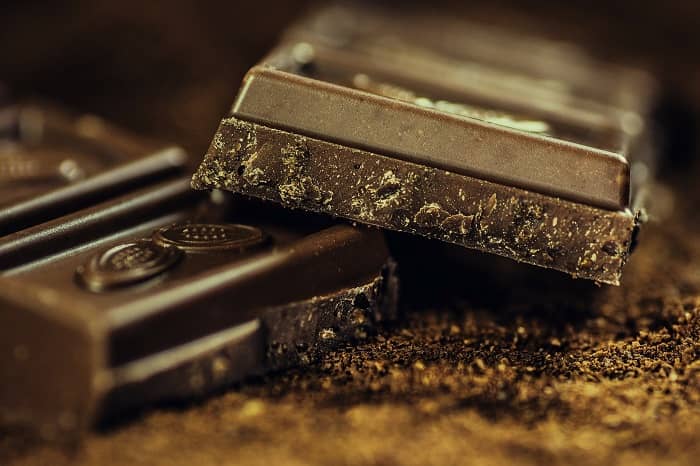
Okay, yes. You read that right. We know that you’re gonna grab a big bite of a bar just after reading this blog.
Yes, dark chocolates are both delectable and HIGHLY rich in iron.
Furthermore, it’s also a good source of magnesium and is loaded with antioxidants.
Not only this but dark chocolates are also the best when it comes to catering to heart attacks or strokes.
Overall, savoring dark chocolate is the answer to ‘how to increase iron levels quickly?’
Iron Per Serving: You get about 3.4 mg of iron from 28 gms of dark chocolate.
#11. Try Some Tofu

Most popular among Asians, Tofu is considered highly nutritional and is RICH in iron.
Additionally, it relieves the menopausal symptoms as well as brings down the risk of getting cardiac arrests.
Iron Per Serving: You get about 3.4 mg of iron from 130gms of tofu.
So, these were the iron food list which constitutes some of the best foods for anemia.
The best part about all these iron-rich foods is that they are:
- Easily accessible,
- delicious, and
- highly nutritious.
However, there are also some foods you need to cut off from your diet for optimal iron intake.
Anemia foods to avoid include tea, coffee, milk, and foods that are rich in gluten.
Upping the iron intake in deficient people is quite an emergency to keep the body healthy.
However, in the case of nutrition, you should also keep track of the intake.
How Much Iron Will Suffice [As Per the Nutritional Data]
It’s very basic but important to state that excess of anything can affect you adversely.
Why?
Because exceeding the dosage can make you suffer from abdomen pain. Or, worse, it can make you arthritic or diabetic.
Therefore, to avoid all such unfortunate consequences, we’ll now closely look at the recommended dosage for iron for different age groups.
Please note that the dosage information is based on the data from the National Institute of Health (NIH):
- Women: 18 milligrams of iron per day for the age group of 19-50. 8 milligrams for those 51 and above.
- Pregnant or lactating mothers: 27 milligrams of iron per day.
- Men: 8 milligrams of iron for those aged 19 and above.
- Children and infants: The dosage varies depending on the age group. Typically, it is between 7-16 milligrams.
Besides this, it’s important to know…
How Much Iron is Too Much?
According to NIH, exceeding iron intake by more than 45 milligrams daily, if you’re a teenager, may negatively affect your body.
Also, have you ever come across the terms, heme and non-heme iron?
Let’s have a breakdown in detail.
Heme vs Non-Heme Iron: Which One is Better?
Heme and non-heme iron are the two broad types of iron, which are differently sourced.
While the former is sourced from animals (meat, poultry, or seafood), the latter comes from plants.
Nevertheless, both are indexed as foods for iron deficiency.
Talking about the dominance in superiority…
Experts suggest the absorption rate of heme iron is way more than non-heme.
Furthermore, NIH says that iron sources including meat, seafood, and poultry can be classified as both heme and non-heme iron.
Hence, proved!
Heme iron is more beneficial than non-heme iron in terms of bioavailability or absorption.
However, this superiority doesn’t affect the benefits you’ll still be getting from non-heme foods for iron deficiency.
But should you go for a supplement in the case of deficiency?
Should a Vegetarian Go for Iron Supplements?
Although iron supplements can relatively fulfill the iron requirements of your body, it would be rather better to prefer natural sources of iron on your plates.
In other words, foods for iron deficiency should be your priority. Also, go for the supplements only after getting a consultation from your dietician or fitness coach.
What’s important is you take care of iron intake in your meals each day.
Although the effects of low iron seem harmless initially, the effects gradually build-up to affect overall health.
Thus, to impart you some more knowledge on iron, we’ve quoted 2 important facts on iron, from health experts.
Iron Facts Shared by an Expert
Let’s hear it from a health expert about the importance of iron in our diet.
Sarah Gold Anzlovar, the owner of Sarah Gold Nutrition, says that iron deficiency is quite common.
She further adds, “It’s a key component of red blood cells and helps transport oxygen from your lungs to the rest of the body.”
The importance of iron is worth paying attention to for long-term fitness. However, if neglected, a person can face several iron deficiency symptoms. Let’s enlist a few of them.
Iron Deficiency Symptoms: How to Know You’re Low on Iron?
Listed below are a few symptoms that can point towards iron deficiency.
They’ve been classified on the basis of the intensity; mild, moderate, and severe deficiency.
Symptoms of Mild Iron Deficiency
- Irritability
- Constant headaches
- Tiredness and fatigue
Symptoms of Moderate Iron Deficiency
- Focusing on something becomes challenging
- Brittle nails
- Weird cravings for non-edible stuff
- Pale or dull skin
- Sore tongue
- Shortness of breath
The following symptoms are observed when iron deficiency is left untreated, thereby, resulting in anemia.
Symptoms of Severe Iron Deficiency
- Tar-colored stool or blood in stool
- Heavy bleeding during menstruation
- Ulcers
- Weight loss
Thus, to avoid falling in the section of any of these symptoms, it’s important to avidly include iron in your diet.
Not only those with malnutrition but iron deficiency can also hit those who have a full-meal diet.
So, what really are the reasons for iron deficiency?
Consequences of Iron deficiency
Terms like anemia or sickle cell anemia are synonyms for iron deficiency, which are certain to develop due to fewer RBCs count.
Now, the low RBC count is due to the lack of hemoglobin in the blood.
Iron acts as a lubricant for the RBCs for carrying out the oxygen to the tissues.
Lack of iron in your body can cause hindrance in this process.
Thereby, resulting in a state called iron deficiency. Anemia is a more chronic state of this distress.
Iron deficiency can result in:
- Rapid heartbeat
- Fatigue
- Anemia
So, do we have a proven solution to fulfill the lack of iron in our bodies?
Yes, there is. Rather say ‘ARE’. There are ample food sources, intake of which can fuel back the amount of iron in your blood.
Experts even suggest an exclusive anemia diet and other iron-rich foods chart for anemia patients.
The best part about food sources is that they are 100% in their natural forms. This eliminates side effects and increases the degree of effectiveness too.
If you can take away anything from this blog, it would be a good idea to include the above-mentioned 11 foods for iron deficiency in your diet right away.
However, iron is only one of the most common nutrient deficiencies, so having a balanced meal is crucial.
Moving forward, here’s a briefing on some last but important notes.
Briefing the Importance of Iron-Rich Foods
One can’t get a clean bill of health if they ignore the sufficient dietary iron intake.
Hence, it’s high time to start having iron-rich fruits and vegetables on your plates, be it heme or non-heme.
However, it should be noted that these foods for iron deficiency are only one side of the coin. In other words, they constitute only half of your nutritional care.
The second side often gets ignored even though it completes the first part. That second part is CONSISTENCY.
Consistency makes the first part successful, and, altogether, they help you fuel back iron intake.
Hence, remember, the 1st part is Iron-rich foods and the 2nd part is the consistency of including them in your meals.
People who wanna know about the foods for iron deficiency also ask basic but important questions related to the same.
Frequently Asked Questions About Iron Intake
Discussed below are some of the most frequently asked questions related to foods for iron deficiency.



No Comments